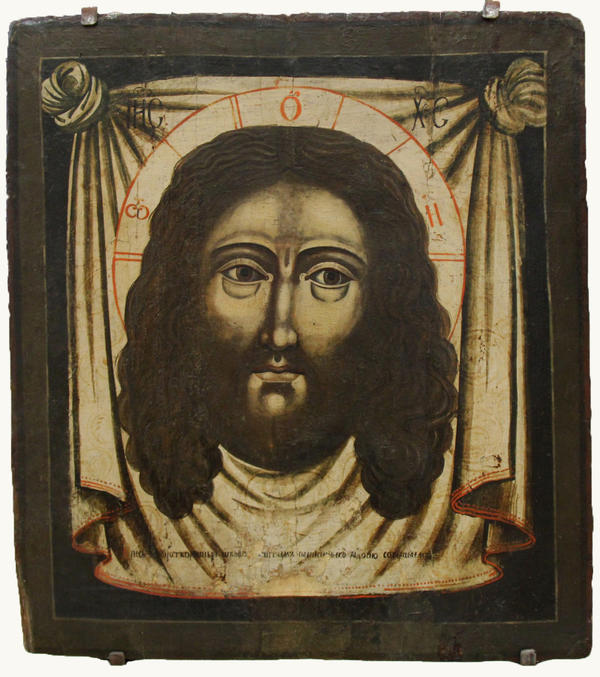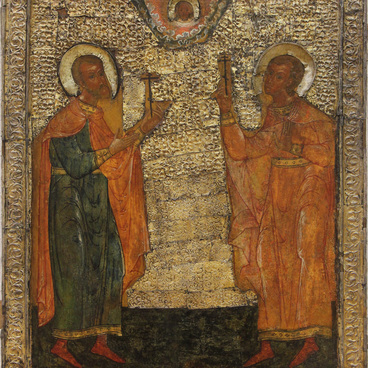The Saviour Not-Made-by-Hands
Время создания
18th century
Размер
74,2x67,5 cm
74.2х67.5х3.8 cm
74.2х67.5х3.8 cm
Техника
Wood, tempera
1
Открыть в приложении#1

Unknown author
The Saviour Not-Made-by-Hands
#3
#2
The story of the iconographic subject The Saviour Not-Made-by-Hands dates back to the beginning of the Common Era. According to legend, at that time Jesus Christ healed the Syrian king Abgar from his illness, and in gratitude the latter decided to create His portrait. However, no matter how hard the artist tried, he failed to capture Jesus. Then Christ washed His face and asked for an ubrus – a towel. He wiped His face with the cloth, and His portrait appeared on the fabric. The image not-made-by-hands was kept in Edessa, and in 545 AD it was transported to Constantinople.
The icon type The Saviour Not-Made-by-Hands can be found in two versions: the Saviour on Ubrus and the Saviour on Chrepie – a clay board. This icon is made in the first version. The face of the Saviour was placed against the background of a church cloth tied at the corners in knots. The icon from the collection of the State Art Museum of Khanty-Mansiysk was painted by a master from Little Russia in the first half of the 18th century.
The icon type The Saviour Not-Made-by-Hands can be found in two versions: the Saviour on Ubrus and the Saviour on Chrepie – a clay board. This icon is made in the first version. The face of the Saviour was placed against the background of a church cloth tied at the corners in knots. The icon from the collection of the State Art Museum of Khanty-Mansiysk was painted by a master from Little Russia in the first half of the 18th century.
#4
Icon
#5
At that time, under the influence of Western art, a realistic direction entered Russian painting. The image stopped being schematic, conventional, but became similar to a portrait, more detailed. On this icon, the masters depicted Christ’s curls, wrinkles on the face, eyelashes on the eyes. The pupils were carefully painted: they applied thin white strokes – imitation of highlights. The ornament on the ubrus and the pattern of the fabric with curls and monograms are finely executed.
#6
Technique
#8
From the 18th century, they began make icons with oil paints, but The Saviour Not-Made-by-Hands was painted with powder paint, which had been used from ancient times. Pigments were diluted in raw egg yolk or a mixture of yolk and linseed oil. Also in the 18th century masters stopped choosing the kovcheg, that is, they did not make indentations for the main image. The icon frame turned from carved to painted. The image was supplemented with the inscription: ‘Today, we revere the image not-made-by-hands, delivering it joyfully’.
#9
State Museum of Fine Arts of Khanty-Mansiysk
читать дальшескрыть
00:00
00:00
1x
The Saviour Not-Made-by-Hands
Время создания
18th century
Размер
74,2x67,5 cm
74.2х67.5х3.8 cm
74.2х67.5х3.8 cm
Техника
Wood, tempera
1
Открыть в приложении
Поделиться

